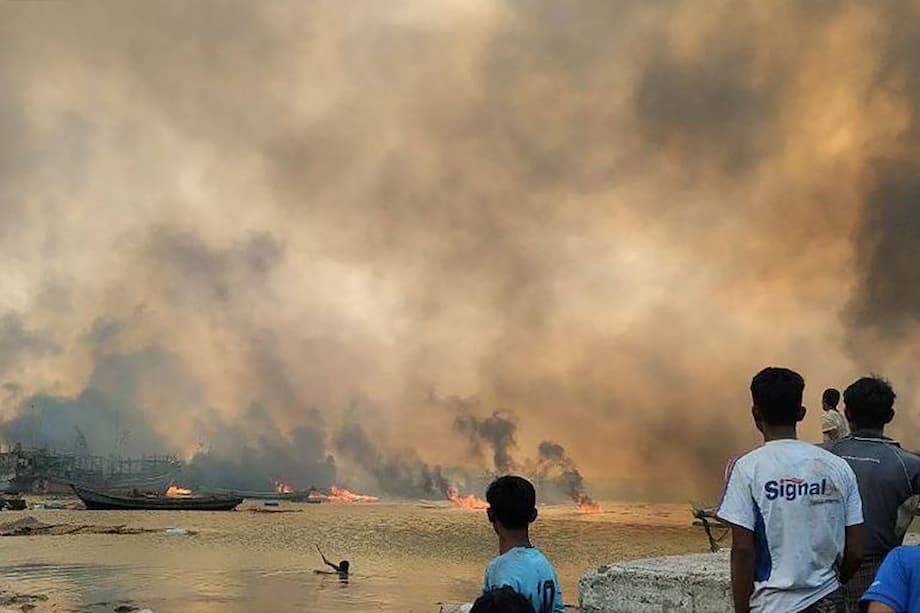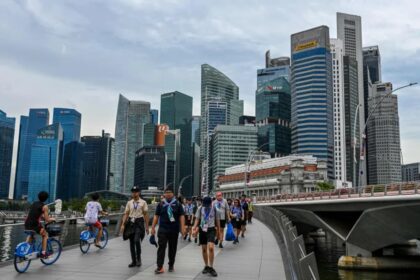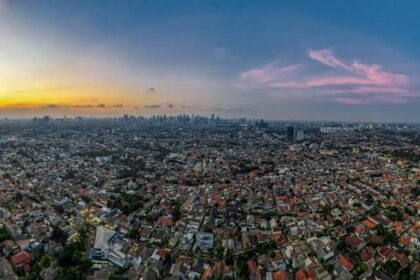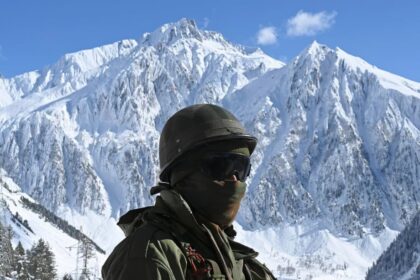Arakan Army’s Rapid Gains Transform Rakhine and Myanmar’s Civil War
Rakhine State, on Myanmar’s western frontier, is witnessing a dramatic shift in power as the Arakan Army (AA) edges closer to full control. Once a peripheral ethnic armed group, the AA now dominates 14 of 17 townships in Rakhine, bordering Bangladesh, and is poised to challenge the military junta for the remaining strongholds—including the state capital Sittwe and the strategic port of Kyaukphyu. This transformation is not only redefining Myanmar’s civil war but also raising the stakes for regional powers and deepening a humanitarian crisis that threatens millions.
The AA’s rise has been swift and strategically calculated. Since late 2023, the group has seized key towns, military bases, and border crossings, leveraging alliances with other ethnic armed organizations under the Three Brotherhood Alliance. The Myanmar military, known as the Tatmadaw, has responded with brutal blockades and airstrikes, but its grip on Rakhine is slipping. The AA’s territorial gains have made it the most powerful non-state actor in the region, with implications that extend far beyond Myanmar’s borders.
How Did the Arakan Army Become So Powerful?
The AA was founded in 2009 with the aim of securing greater autonomy for the Rakhine people, who have long felt marginalized by Myanmar’s central government. Over the years, the group has built a formidable fighting force, forged alliances with other ethnic armies, and established a political wing—the United League of Arakan (ULA)—to govern areas under its control. The AA’s military successes, especially after the 2021 coup that plunged Myanmar into chaos, have allowed it to expand its influence rapidly.
Operation 1027, launched in late 2024 by the Three Brotherhood Alliance (comprising the AA, Myanmar National Democratic Alliance Army, and Ta’ang National Liberation Army), marked a turning point. The operation’s success exposed the junta’s vulnerabilities and enabled the AA to capture large swathes of Rakhine, including the town of Ann, home to the Western Command headquarters of the Myanmar military. The AA now commands a force estimated at 10,000 fighters, while the junta’s presence is reduced to a handful of fortified towns.
As the AA consolidates its hold, it has begun to function as the de facto government in much of Rakhine, administering justice, providing basic services, and managing security. However, this new authority comes with challenges—resource constraints, ongoing conflict, and the need to win legitimacy among diverse local communities.
Humanitarian Crisis: Blockades, Starvation, and the Rohingya Dilemma
The AA’s advance has triggered a severe humanitarian crisis. The military’s blockade of Rakhine has left over two million people at risk of starvation, with food and fuel prices soaring and law and order collapsing in besieged towns like Sittwe. The capital is now accessible only by sea and air, and reports of crime and insecurity are widespread. Humanitarian organizations warn of a looming catastrophe if aid does not reach those in need.
Rakhine’s complex ethnic landscape further complicates the crisis. The Rohingya, a Muslim minority long persecuted by Myanmar’s authorities, have been caught in the crossfire. The 2017 military crackdown forced over 730,000 Rohingya into Bangladesh, where nearly a million now live in overcrowded refugee camps. As the AA and the military battle for control, Rohingya civilians face renewed violence, forced conscription, and displacement.
Allegations of Abuses and Forced Recruitment
Both the AA and the military have been accused of human rights abuses against the Rohingya. Amnesty International and other watchdogs report large-scale arson, killings, and forced recruitment by both sides. The military has armed some Rohingya to fight the AA, while Rohingya armed groups in Bangladesh are mobilizing against the rebels. The AA denies targeting Rohingya civilians, but the situation remains dire.
Amnesty International stated, “Increasing deadly attacks against Rohingya people in Myanmar’s Rakhine State bear a terrifying resemblance to the atrocities of August 2017… The Arakan Army, as it advances and captures more territory, also faces allegations of atrocities.”
Bangladesh, already hosting the world’s largest refugee camp in Cox’s Bazar, is under immense pressure. The government has called for the safe and voluntary repatriation of Rohingya refugees and has proposed the creation of a ‘safe zone’ in Rakhine to facilitate humanitarian access. However, ongoing instability and fragmented governance in Rakhine make the prospect of return remote.
Geopolitical Stakes: China, India, and Bangladesh Respond
The battle for Rakhine is not just a local affair—it is a geopolitical contest involving China, India, and Bangladesh, each with vital interests in the region.
China’s Strategic Calculations
China’s Belt and Road Initiative (BRI) runs through Rakhine, with the Kyaukphyu deep-sea port and oil and gas pipelines serving as critical infrastructure linking China to the Indian Ocean. As the AA encircles Kyaukphyu, Beijing faces a dilemma: it has supported the Myanmar military to protect its investments but may accept AA control if its assets are safeguarded. Thousands of Chinese workers and private security personnel are present in Kyaukphyu, making a direct assault by the AA risky. Instead, the AA has opted for a siege, hoping to force a negotiated withdrawal by the junta without damaging Chinese interests.
India’s Balancing Act
India’s interests in Rakhine center on the Kaladan Multi-Modal Transit Transport Project, which connects the port of Sittwe to India’s northeast. The project is crucial for regional connectivity and security, but ongoing conflict threatens its completion. India has maintained contacts with both the junta and the AA, emphasizing that its development projects are grant-based and intended to benefit the people of Myanmar. Indian officials have relocated personnel from Sittwe to Yangon for safety, and New Delhi has called for an end to violence and an inclusive, Myanmar-led peace process.
An Indian Ministry of External Affairs spokesperson said, “India continues to support several grant-based developmental projects in Myanmar intended to benefit its people… Our position has been consistent in calling for an end to violence, peace, stability, and a resolution of ethnic issues through a genuine federal democracy.”
India is wary of pushing the junta closer to China and is monitoring the situation closely, especially as the AA’s control expands near its northeastern border.
Bangladesh’s Diplomatic Tightrope
Bangladesh, sharing a 271-kilometer border with Rakhine, is directly affected by the conflict. The AA’s capture of Maungdaw and other border towns has given it control over the entire frontier, prompting Dhaka to engage in cautious dialogue with the AA. Bangladesh has proposed recognizing the AA’s authority in exchange for cooperation on the Rohingya issue and the establishment of a safe zone for refugees. However, such a move requires delicate diplomatic balancing, given the sensitivities of regional powers and the risk of further destabilization.
Military Strategy: Why the AA Has Paused Its Advance
Despite its rapid gains, the AA has not launched full-scale offensives against the remaining junta-held towns of Sittwe, Kyaukphyu, and Manaung. Analysts point to three main reasons:
- Protection of Foreign Investments: Kyaukphyu hosts major Chinese projects, while Sittwe is vital for Indian interests. A direct assault could damage infrastructure and harm foreign nationals, risking relations with Beijing and New Delhi.
- Building Local Legitimacy: The AA is focused on consolidating governance and winning the trust of local communities, including ethnic minorities and the Rohingya, before expanding further.
- Resource Constraints and Overstretch: Sustained offensives could overstretch the AA’s resources and expose it to counterattacks by the military, which still controls airspace and key supply routes.
Instead, the AA has besieged these towns, encircling them to pressure the junta into negotiating a withdrawal. The group is also working to block military advances from neighboring regions and prevent the junta from launching counteroffensives.
Governance and Challenges in AA-Controlled Areas
With much of Rakhine under its control, the AA has established the Arakan People’s Revolutionary Government (APRG) to administer daily affairs. This includes providing basic services, maintaining order, and managing justice. While some residents report improved security and freedoms, others criticize the AA for restricting speech, forced conscription, and controversial property nationalizations. The group’s ability to govern effectively will be tested as it seeks to transition from a rebel force to a credible authority.
Regional and International Implications
The AA’s rise is reshaping Myanmar’s political landscape. As the central government’s authority wanes, non-state actors like the AA are gaining de facto recognition from neighboring countries. This fragmentation could signal a move away from a centralized union toward a future defined by multiple autonomous regions, each with its own governance structures and external relationships.
For China and India, the stability of Rakhine is crucial for their strategic projects and regional influence. Both powers are engaging with the AA, albeit cautiously, to protect their interests. Bangladesh, meanwhile, must balance humanitarian obligations with national security, seeking solutions for the Rohingya crisis while avoiding entanglement in Myanmar’s internal conflict.
The international community faces a dilemma. While calls for accountability and humanitarian access grow louder, diplomatic efforts have yielded little progress. The United Nations and rights organizations urge investigations into alleged war crimes and advocate for the suspension of aviation fuel imports used by the military for airstrikes. Yet, the flow of aid and pressure remains insufficient to alter the trajectory of the conflict.
The Rohingya’s Precarious Future
For the Rohingya, the shifting power dynamics offer little hope. Many remain stateless, dispossessed, and vulnerable to exploitation by armed groups. The prospect of safe and voluntary repatriation to Rakhine is remote, given ongoing violence and the lack of a unified authority. Bangladesh continues to host nearly a million refugees in deteriorating conditions, with international aid declining and security concerns rising.
One analyst from the Georgetown Journal of International Affairs observed, “The future of the Rohingya is entangled in the strategies of regional powers, as China and India prioritize their goals over humanitarian concerns. The promise of repatriation seems increasingly hollow.”
In Summary
- The Arakan Army now controls most of Rakhine State, challenging Myanmar’s military junta and reshaping the civil war.
- The AA’s rise has triggered a severe humanitarian crisis, with millions at risk of starvation and renewed violence against the Rohingya minority.
- China, India, and Bangladesh are deeply invested in Rakhine’s stability, each pursuing their own strategic interests as the AA consolidates power.
- The AA has paused its advance on key towns to protect foreign investments, build legitimacy, and avoid overstretching its resources.
- Governance in AA-held areas is evolving, but challenges remain, including allegations of abuses and the need to win local trust.
- The Rohingya remain trapped in limbo, with little prospect of safe return as regional and international actors struggle to resolve the crisis.
- Myanmar’s future may be defined by a patchwork of autonomous regions, with the AA’s success in Rakhine serving as a model—and a warning—for the rest of the country.












